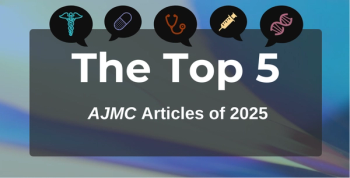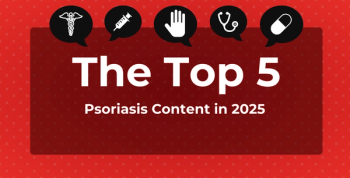
5 Things Americans Should Know About Weight Loss Drugs
Weight loss drugs have gained attention as a tool to help combat obesity, but understanding how they work, who they’re for, and their potential downsides is key to making informed decisions.
While these medications are not a one-size-fits-all solution, they can complement lifestyle changes like diet and exercise. As their popularity rises further, it’s important to know how these drugs work, their potential adverse effects, and who can benefit from them.
Here are 5 important things Americans should know about weight loss drugs.
1. Types of Weight Loss Drugs
Weight loss medications fall into 2 broad categories: appetite suppressants and absorption blockers.
Appetite suppressants include glucagon-like peptide 1 (GLP-1) receptor agonists such as semaglutide, liraglutide (Saxenda), and—under a similar class called dual GLP-1/glucose-dependent insulinotropic polypeptide (GIP) receptor agonists—tirzepatide (Mounjaro, Zepbound).1 GLP-1 receptor agonists work by mimicking hormones that reduce hunger and promote a feeling of fullness. These drugs are often used for people with obesity or those with obesity-related conditions like type 2 diabetes.
Absorption blockers like orlistat (Xenical, Alli) function differently by inhibiting the body’s ability to absorb fat from food, and are sometimes referred to as amylase inhibitors or starch blockers.2 While appetite suppressants tend to focus on controlling caloric intake, absorption blockers aim to reduce the number of calories retained from meals.
Both types of drugs are designed to work in tandem with lifestyle changes, such as a reduced-calorie diet and increased physical activity, to maximize results.
2. Common Adverse Effects
Although weight loss drugs can lead to significant weight reduction, they also come with potential adverse effects that patients need to be aware of. For GLP-1 agonists, common gastrointestinal effects include nausea, diarrhea, constipation, and vomiting.1 These symptoms often subside as the body adjusts to the medication, but in some cases, they can be persistent or severe, requiring a dose adjustment or discontinuation of the drug.
For absorption blockers like orlistat, patients may experience gas, bloating, stomach cramps, and diarrhea due to the fat-blocking action of the drug.2 Because orlistat prevents the absorption of dietary fat, excess fat is excreted through the digestive system, leading to these unpleasant symptoms.
3. Weight Loss Drug Costs
The cost of weight loss drugs can be a significant barrier for many patients, and GLP-1 agonists, which have become popular due to their effectiveness, are among the most expensive.
In the US, the list price for GLP-1 drugs can range between $936 and $1349 before insurance, rebates, or other discounts.3 Semaglutide specifically has a list price of about $1350 for a 28-day supply, meaning it could cost a patient more than $16,000 a year to take the drug without insurance or manufacturer discounts.4
Even for those with health insurance, most adults still have to pay at least part of the cost, and many of them still struggle to afford the medication.3 According to a KFF Health Tracking Poll, insurance fully covered GLP-1 agonists for weight loss for less than a quarter of adults, and 19% of insured adults still had to fully pay for the drug themselves.
Absorption blockers like orlistat are generally more affordable depending on whether a prescription-strength or OTC version is used.5 The cost of brand-name Xenical can cost more than $900 for a 1-month supply of 90 capsules without insurance, but some discounts can bring this down to $431.38 per month. Generic orlistat can still cost more than $700 per month, with some coupons dropping this to $207.55.
Because weight loss drugs are often taken over an extended period, the cumulative cost can still add up. It’s also important to check what the patient’s insurer covers, as some insurers have recently announced they are dropping or limiting coverage of GLP-1 receptor agonists for weight loss.6
4. Importance of Treatment Follow-Up
Continuing treatment is crucial when it comes to weight loss medications. Stopping these drugs abruptly can lead to rapid weight regain, as the body’s hunger signals return to normal, as well as increased blood pressure. For drugs like GLP-1 agonists, which regulate appetite and satiety, discontinuing the treatment without a proper follow-up plan can undo much of the progress made during the treatment period.
Patients should have regular check-ins with their health care provider to monitor weight loss, assess the effectiveness of the treatment, and address any side effects. Additionally, gradual weaning off the medication, if necessary, may prevent the sudden return of pretreatment hunger levels and help sustain weight loss in the long term.
5. Who Are These Drugs for?
Weight loss drugs are not for everyone. They are generally prescribed for individuals with a body mass index (BMI) of 30 or higher, or a BMI of 27 or higher for those with obesity-related conditions such as hypertension or type 2 diabetes. These medications are not intended for people looking to lose a small amount of weight for cosmetic reasons; instead, they are part of a broader strategy to address serious health risks associated with obesity.
Health care providers play a critical role in determining who qualifies for weight loss medications, and some employers are modifying these qualification criteria. Many patients must undergo a thorough assessment to ensure that the benefits of the drug outweigh any potential risks, especially for those with preexisting conditions. While these drugs can be highly effective for some, they are most successful when combined with lifestyle changes like diet and exercise.
References
- Catanese L. GLP-1 diabetes and weight-loss drug side effects: "Ozempic face" and more. Harvard Health Publishing. February 5, 2024. Accessed September 20, 2024. https://www.health.harvard.edu/staying-healthy/glp-1-diabetes-and-weight-loss-drug-side-effects-ozempic-face-and-more
- Tweed K. The truth about starch blockers. WebMD. May 15, 2014. Accessed September 20, 2024. https://www.webmd.com/obesity/features/the-truth-about-starch-blockers
- Klein HE. Most insured adults still have to pay at least part of the cost of GLP-1 drugs. AJMC®. May 16, 2024. Accessed September 20, 2024. https://www.ajmc.com/view/most-insured-adults-still-have-to-pay-at-least-part-of-the-cost-of-glp-1-drugs
- Warren K. How much does Wegovy cost? GoodRx. Updated September 3, 2024. Accessed September 20, 2024. https://www.goodrx.com/wegovy/wegovy-for-weight-loss-cost-coverage?label_override=undefined
- Holmes TE. How much is xenical (orlistat) with and without insurance? GoodRx. April 24, 2024. Accessed September 20, 2024. https://www.goodrx.com/xenical/xenical-cost-without-insurance
- Klein HE. Rising costs lead insurers to drop weight loss drug coverage, further increasing patient burden. AJMC. August 6, 2024. Accessed September 20, 2024. https://www.ajmc.com/view/rising-costs-lead-insurers-to-drop-weight-loss-drug-coverage-further-increasing-patient-burden
Newsletter
Stay ahead of policy, cost, and value—subscribe to AJMC for expert insights at the intersection of clinical care and health economics.








































